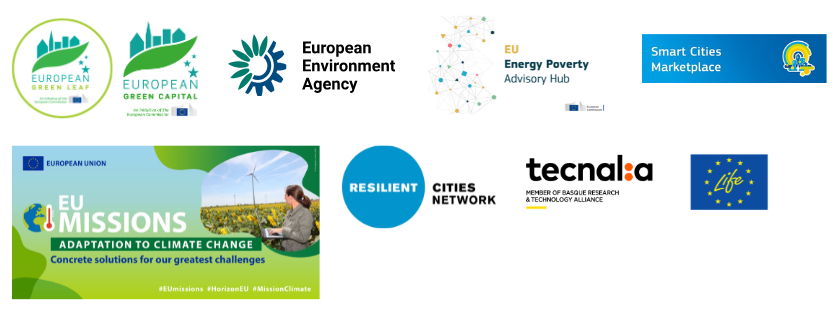The increasing number of heat waves pose an existential threat to communities worldwide. Last year, global temperatures reached record highs according to Copernicus. In Europe, heat represents the leading cause of climate-related deaths, claiming around 48 000 lives in 2023. The European Climate Risk Assessment warns that, as the fastest-heating continent, Europe’s liveability is at risk.
Safeguarding Europe’s quality of life starts in our cities and towns. By building resilience locally and harnessing the strength of our communities, we can make heat-exposed spaces safer, bring life back to currently deserted heat islands, and turn hostile places into inclusive oases. Local governments are already working to make this happen.
As temperatures rise, cities and towns hit REFRESH to redefine our urban environment, protecting and supporting communities, and rethinking spaces for a cooler future.
Get inspired by cities’ actions to REFRESH!
Dive into stories from our pioneer cities and discover other signatories’ actions!
What is your city doing to REFRESH? Join the movement!
As temperatures rise, REFRESH your city to make it a welcoming place for everyone. Inspire others and add your action to the map!
In just a few clicks, share one or two steps your city is taking to hit REFRESH!
Additionally, spread the word within your community in just a few simple steps - find out more.
Why REFRESH your city?
Faced with rising temperatures and persistent heat stress, municipalities play an essential role in making Europe more resilient, to:
Heat is the most severe and pressing climate risk to human health today. As Europe's foremost silent climate killer, heat waves are responsible for 95% of climate or weather-related deaths over the past 40 years (European Environment Agency). The threat of heat waves is even more acute in urbanised areas due to the heat island effect, where infrastructure, dense populations and human activity can raise city temperatures by 10 to 15 degrees compared to nearby rural areas,according to a JRC study. With the number of heat-related fatalities projected to increase with rising temperatures, cities have the urgent responsibility to protect their inhabitants and create a healthy and safe environment for all.
Sustaining quality of life and ensuring wellbeing in our cities and towns depends on effective local responses to heatwaves.
The most vulnerable and marginalised of our communities are at the greatest risk during heat waves, as heat exacerbates chronic conditions and disproportionately affects exposed populations. Thus, heat waves pose a serious threat to outdoor workers, the elderly, people suffering chronic illness, pregnant women, children, unhoused individuals and those living in poorly built dwellings or with inadequate access to cooling. Underserved neighbourhoods often suffer more intense heat island effects due to high density, absence of vegetation and deficient housing conditions.
For a more inclusive and just society, cities and towns must address heat’s disproportionate impact on the most vulnerable populations, providing direct assistance, addressing energy poverty and housing deficiencies, and strengthening community support.
Critical infrastructure often falters under extreme heat, disrupting city activity, making them less operational and comfortable. From malfunctioning transportation systems to overexposed public spaces, non-resilient urban design brings city life to a standstill.
To ensure our cities and towns are not only liveable but also dynamic in a warmer climate, refreshing the design of the space and infrastructure is essential.
Heat places significant strain on economic activity, local industries, and infrastructure. According to a 2021 study, due to effects on productivity, the economic costs of heatwaves are projected to decrease fivefold by 2060. With ever more frequent and longer heatwaves, European countries will have to face yearly economic losses up to 3% of their GDP. Certain industries are particularly affected, including the building sector, with outdoor workers particularly impacted, and tourism, which will experience significant declines in activity in some regions, especially along southern coastal areas.
To remain competitive and attractive as places to live, work, and visit, cities and towns must reimagine their economic hubs and workspaces, increasingly challenged by rising temperatures.
How can you REFRESH your city?
Faced with rising heat, REFRESH your city with:
 NATURE keeping it fresh with green spaces, shaded corridors and water features. |  SMART URBAN DESIGN promoting heat-resilient infrastructure and urban planning. |  GOOD GOVERNANCE leading with proactive policies, widespread awareness and warning systems. |  COMMUNITIES working together to support the most vulnerable. |


